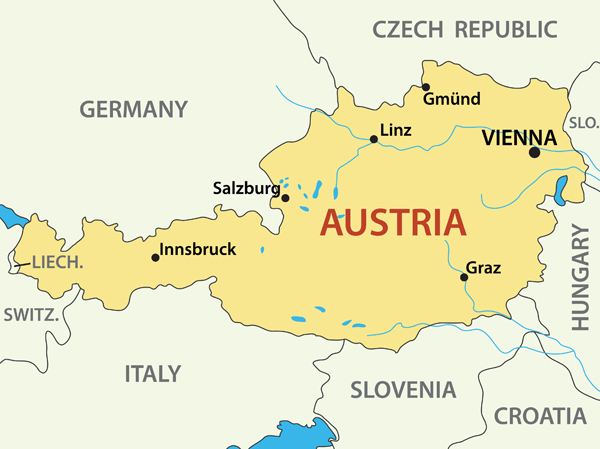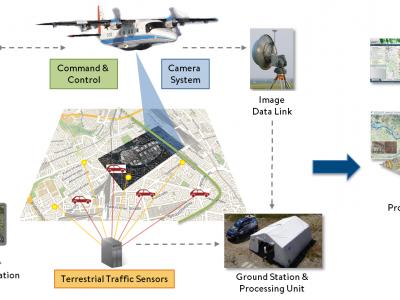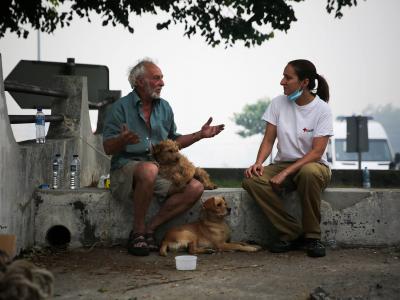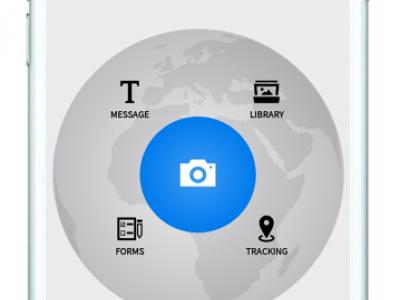Contact
The main objective of 3 is to find solutions overcoming shortcomings and limitations in the management and monitoring of spontaneous as well as affiliated volunteers on the crises scene in terms of location, tasking, capabilities and duration of operations but also ability to merge and synthesise disparate data sources and models in real time (e.g. visualisation of resources, spreading models, tactical situation, critical assets map, damaged objects/infrastructure etc.) to support incident commander decision making and exchanging -related information among agencies.
3 also tries to find solutions for providing psychosocial support and interaction with population (e.g. foster communication capabilities, registration of affected people, provide safety information, etc.). Trial 3 will be prepared and conducted as a field along a European Civil Protection (EUCP-EX) in Erzberg (Styria/Austria).
Additionally Driver+ in Trial 3 aims at validating the methodology and solutions produced by DRIVER+ project to benefit and enhance by systematisation the already existing best practices of organising exercises, trials and tests.
The Trial will be carried under the framework of a European civil protection exercise (EUCP-EX). The Trial will be organized as a multi-day field exercise in parallel to the EUCP-EX. The EUCP-EX will be organized as a Large Scale European Civil Protection exercise. National organizations will be present with their volunteers and experts while making use of equipment, vehicles and tools in simulated disasters scenarios.
The Trial will evaluate a selection of tools contributing to international or national CM processes addressing the Crises Management dimension, especially in the fields of:
- Volunteer management;
- (e.g. exchanging of information)
- Improvement of crises management tasks
- Representation of information and communication with public
- and of operational performance
Therefore technically, solutions are expected to address the following needs (also in relation to identified Gaps as presented in section 2.1 – Gaps Analysis):
- Volunteer Management: in the sense of management of spontaneous as well as affiliated volunteers on the crises scene in terms of location, tasking, capabilities and duration of operations.
- Real-time data and information fusion to support incident commander decision-making: ability to merge and synthesise disparate data sources and models in real time (e.g. visualisation of resources, spreading models, tactical situation, critical assets map, damaged objects/infrastructure etc.) to support incident commander decision making and exchanging crisis-related information among agencies.
- Incorporating information from multiple and non-traditional sources: Reporting of dangerous areas and situation overview from multiple and non-traditional sources (e.g. crowdsourcing and social media) into operations.
- Psychosocial support: Having the to measure stress and/or improving the communication and the awareness of psychological stress of those affected, especially spontaneous and affiliated volunteers.
- Interaction with the population: as including e.g. 1). Micro-learning capabilities to communicate to the population safety information and recommendations what they can do during a crisis. 2). Registration of affected people. 3). Delivering information from the public to the management authorities.
- : evaluation methodology/tools for performance and how to learn from self-experience.
Gaps
Addressing the psychological stress of volunteers
Volunteers are more vulnerable to adverse mental health reactions and psychosocial ill-being during and following a intervention than salaried staff working as crisis responders on a daily basis. Volunteers are more vulnerable because they are part of the community they serve and therefore exposed to the same losses and challenges, volunteers receive limited , have less or most often no crisis experience and they are younger. These vulnerabilities apply even more strongly to spontaneous volunteers than affiliated volunteers.Identification with victims as a friend, low protection of personal safety, severity of exposure to gruesome events and stories during work, anxiety sensitivity, and lack of post- social support, unrealistic expectation of own abilities, heroic aspirations, ill-defined or poorly understood tasks and lack of perceived support from team leaders and the lead are among the main contributors to increase vulnerabilities and related to greater psychopathology among volunteers post-event.
References in the literature: Responders health and safety is addressed by the literature, including mental health and psychosocial issues. However, thespecific case ofvolunteers has received very limited interest and requires significant attend from research to be understood.
Interaction with the population
- What is the current situation (“current ”)?
There is a system in place including several means of communication depending of the size of the . The system includes sirens, radio messages, TV messages, Katwarn and internet.
- What is the necessary to reach adequate levels of performance?
To overcome the shortcomings for communicating with the public during a large
(not only related to in policy and procedures) solutions XY-n are needed
a) to communicate public safety information and recommendation to the affected population (as much as possible through technology support as micro learning methods and applications);
b) that provide population mean for registration of affected people; and
c) that allow public to send
information to related CM organisations.
Evaluation
Deficiencies of management methodology for performance and to learn from self-experience
- Evaluation Criteria
- Procedures or methods to structure and conduct effective exercise evaluation
- Tools and methods to process perceptions in order to generate evaluation insights (e.g. through efficient compilation, analysis, data visualization, etc.)
- Possible options of documenting perceptions (e.g. text, photos, videos, audio recordings, drawings, map annotations, etc.), which can be utilized for evaluation
- Equipment used to communicate between evaluation staff and other relevant actors
Real-time data and information fusion to support incident commander decision-making
This
is about using different sources of raw data and turn them into actionable intelligence. This implies the ability to displaying simultaneously data from different origin first responders, but also external sources like critical infrastructure operators, local authorities, researchers.This poses challenges like the use of a unique GIS system with different formats and scales, data repository
, storing, access and authorisation, data update.
The objectives are to increase situational awareness by a better understanding of the
dynamics to support real-time
decision making and allow for a better anticipation
.
References in the literature: the challenge to transform raw data is well documented in the literature, as well as the ability to re-use information from past similar events.
Incorporating information from multiple and non-traditional sources
Social media provides opportunities to enrich situational awareness. However, there is a to turn raw data into actionable information or intelligence by adding context, validating content and linking follow-on information to provide added value. Challenges lie with the amount of data to be treated and the integration of different formats of data and their displaying onto a unique environment. There are also issues regarding the trustworthiness of sources and the capturing of social media posts in real time on the scene (legal constraints).
References in the literature: this is widely recognised and described in the literature, often in relation with terrorist attacks types of crisis.
Managing spontaneous volunteers
There are different types of volunteers with different capabilities and needs:
- Spontaneous volunteer: “Individual who is not affiliated with an existing incident or voluntary but who, without extensive preplanning, offers support to the to, and from, an incident”
- Affiliated volunteers: “These volunteers are attached to a recognised voluntary agency that have trained them for response and has a mechanism in place to address their use in an ”
- “Digital volunteers”: providing support on social media The main challenges regard the registration, management and communication with unaffiliated volunteers during an incident or (typically done onsite during the ) and the limited communication and team work among unaffiliated volunteers.
methods and procedures exist to coordinate and manage affiliated volunteers, but not for spontaneous volunteers (development of serious games ongoing).
References in the literature: this is widely recognised and well detailed in the literature.
Objectives
Data Fusion - S
To find novel solutions which overcome limits in the ability to merge and synthesize disparate data sources and models in real time (historic events, spreading models, tactical situation, critical assets map, etc) to support incident commander decision making
Trial setup
To find adequate Setting for gaining necessary disparate data in order to provide operations with added-value decision Support through tested
Volunteer Management - CM
To enhance operational operational decision making through providing crowd-sourced data as well as improving effectivity and Efficiency of coordination through coordinating volunteers with appropriate Tools and providing the public with respective information
Volunteer Management - S
To introduce novel Tools supporting the management of spontaneous and affiliated volunteers on the scene in terms of location, tasking, capabilities, and shift duration
Addressing the psychological stress of volunteers - CM
Assess effect of VR PSS for volunteers during earthquake event in terms of stress, performance of tasks and wellbeing after operation
Addressing the psychological stress of volunteers - S
Compare VR PSS versus traditional PSS for volunteers during earthquake event with respect to stress, performance of tasks and wellbeing after operation
Interaction with the population
Reducing casualties and impact of earthquake event to the affected Population by introducing proper communication channels and communicate crucial Information timely and adequately
Incorporating information from multiple and non-traditional sources - S
Assess if xy is able to enhance operational awareness through combining no-traditional sources
The central area of Austria has been struck by a heavy earthquake and subsequent heavy rains! The local region of Eisenerz (in Styria, Austria) is one of the most affected with missing persons, casualties, collapsed buildings, blocked roads, and endangered industries working with hazardous substances. simulates the large-scale to the involving the national organizations, international assistants and a large amount of spontaneous volunteers.
Scenarios
The central area of Austria has been struck by a heavy earthquake and subsequent heavy rains!.
The local region of Eisenerz (in Styria, Austria) is one of the most affected with missing persons, casualties, collapsed buildings, blocked roads, and endangered industries working with hazardous substances.
Inhabitants have left their houses being afraid of aftershocks and collapsing of buildings. They have to spend the next day’s outdoors due to the lack of temporary shelter and blocked roads.
Similarly, there is a disruption of lifelines such as water, food, shelter, transportation and medical care. Electricity and mobile networks are severely damaged.
All local and national organizations have been deployed on site (Austrian Red Cross, fire brigades, police and the army); however, due to the extension of the affected area and overwhelmed national capacities, the union civil protection mechanism was activated. A request of international assistants was activated with regards to medical treatment, water purification as well as search and rescue.
Due to the difficulty to access the affected area and considering the impact of the , there is an urgent for humanitarian assistance and .
A large amount of volunteers and rescue equipment is needed to deal with the increasing number of affected people i.e. search and rescue, shelter, medical care, water food and transportation.
Additionally, there is also an urgent for the management of spontaneous volunteers.
The will require a commitment of stakeholders from every Management level and from all the agencies participating in the response: Austrian Red Cross, Austrian Fire Brigades, Police, Army, decision-makers and authorities.
Other response organisations from neighbouring countries are expected to participate following the procedures from the Union Civil Protection Mechanism (UCPM).
The aims that actions will be taken by the stakeholders in a realistic information environment, based on currently available means, plans, rescue procedures and good practices of participants. Various exercises will serve as testing environment for introduction and establishment of the standard operational procedures (SOPs), standards and concepts, of the UCPM within central European region.

 |
Portfolio of Solutions web site has been initially developed in the scope of DRIVER+ project. Today, the service is managed by AIT Austrian Institute of Technology GmbH., for the benefit of the European Management. PoS is endorsed and supported by the Disaster Competence Network Austria (DCNA) as well as by the STAMINA and TeamAware H2020 projects. |




